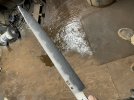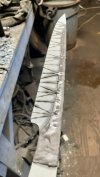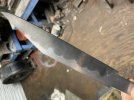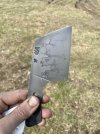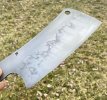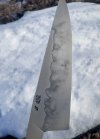Richard338
Gold Member
- Joined
- May 3, 2005
- Messages
- 7,409
To be fair, I've been happy with all my previous heat treating there including some unusual requests like a Damascus pommel tempered back into the 40s of hardness. This is my first batch of W2 with them and first time shooting for a hamon. If I have time today I'll take it to 400 grit and try to etch again.

